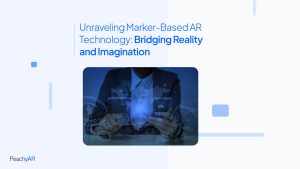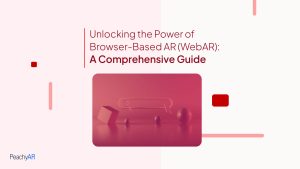Augmented Reality For Marketing
Augmented Reality in Marketing and How It Enhances Customer Experience
Augmented Reality in marketing significantly amplifies customer experiences by providing interactive, personalized, and memorable engagements, ultimately fostering more robust connections between brands and their audience.
AR also enables brands to showcase products or services more compellingly and experientially. By overlaying virtual elements onto the real world, AR allows brands to deliver dynamic, personalized content that sparks curiosity and fosters a deeper connection with their target audience.





Augmented Reality For Marketing
The Benefits Of Using Augmented Reality in Marketing
Consumer Experiences
AR enables tailored experiences by allowing users to interact with products virtually. This personalized engagement helps in catering marketing content specifically to individual preferences, boosting customer satisfaction and loyalty.
Viral and Shareable Content
AR experiences often become social media-worthy content. Users tend to share their unique and engaging AR experiences, amplifying brand visibility and reaching a broader audience through word-of-mouth and social sharing.
Brand Recognition
Integrating AR into marketing strategies helps brands stand out in the competitive landscape. It showcases innovation, fosters brand recall, and positions companies as forward-thinking and tech-savvy.
Product Visualization
AR assists consumers in visualizing products in real-life environments. For instance, furniture companies use AR to showcase how their products would look in a customer’s home, facilitating more informed purchase decisions.
Data and Insights Generation
AR campaigns can collect valuable data on user behavior, preferences, and interactions. This data provides marketers with insights into consumer preferences, allowing for more targeted and effective future campaigns.
Enhanced Engagement
AR captures and sustains audience attention by offering immersive and interactive experiences. This heightened engagement leads to longer interaction times, increasing the chances of message retention and brand recall.
Augmented Reality For Marketing
Case Studies of AR in Marketing
One notable example is the partnership between IKEA and AR. By introducing the IKEA Place app, customers can virtually place furniture in their homes to see how it looks and fits before purchasing. This AR-powered experience has increased customer engagement and reduced product returns, as users can confidently visualize the furniture in their space, ensuring a perfect fit.
Another compelling case study is the collaboration between Sephora and AR. Sephora’s Virtual Artist app allows users to try on different makeup products virtually, experimenting with shades, textures, and finishes. This innovative use of AR technology has revolutionized the beauty industry by providing customers with a personalized and immersive makeup experience, leading to increased sales and customer satisfaction.

Experience Augmented Reality with PeachyAR.
Try PeachyAR Platform. Free Sign-Up. No credit card is required.
Or Set a Demo to Discuss More

Augmented Reality For Marketing
Augmented Reality Marketing Boosts Sales, Stats: The New Digital Advertising Models
Instead of relying solely on static images or descriptions, AR empowers consumers to visualize and interact with virtual representations of products in real-time. This enhances the understanding of the product’s features and functionalities and builds trust and confidence in the purchasing decision. Moreover, AR campaigns have proven to be highly shareable and memorable, increasing brand visibility and customer advocacy. When brands offer unique and entertaining AR experiences, users are more likely to share their encounters on social media platforms, generating organic buzz and expanding the brand’s reach. This word-of-mouth effect can profoundly impact brand awareness and customer acquisition.
Frequently Asked Questions
Various campaigns can utilize AR, including interactive product demonstrations, immersive storytelling, location-based promotions, gamified experiences, and virtual try-on experiences.
Basic AR experiences can be accessed through smartphones or tablets, but more advanced AR campaigns may require specialized devices like AR glasses or headsets.
Absolutely, AR enhances e-commerce by allowing customers to visualize products in their environment virtually. It’s also practical for online marketing through interactive ads, product visualizations, and engaging storytelling on websites or social media platforms.
Begin by defining your objectives and target audience. Explore AR development platforms or partner with AR agencies to create engaging experiences. Consider starting with smaller, focused campaigns and gradually expanding based on feedback and success metrics.
Our Blogs
Increase and update your information about augmented reality


Unraveling Marker-Based AR Technology: Bridging Reality and Imagination

Contact Support
Whether you’re interested in our referral program or a custom soltuion, we’re here to help you find the right plan to support your need. Tell us about you and we’ll be in touch.
By pressing the submit button, I agree to Designership comtacting me by email and/or phone to share opportunities exclusively available to Select or Enterprise customes. I also understand that any information I’ve shared in this form is subject to Designership Privacy Policy.
"*" indicates required fields
Subscribe To Our Newsletter
A monthly digest of the latest news, articles, and resources.
